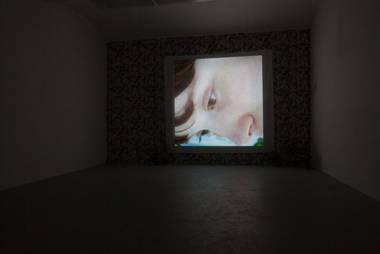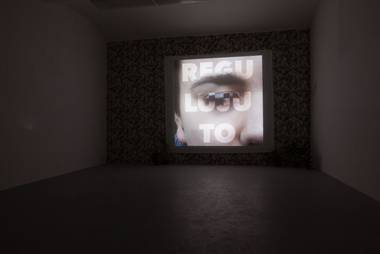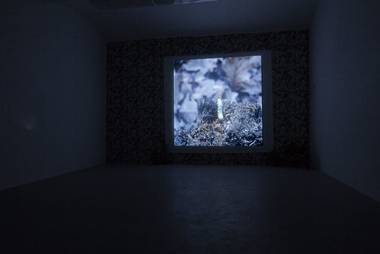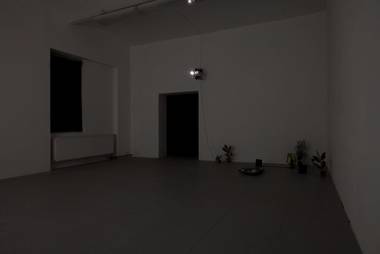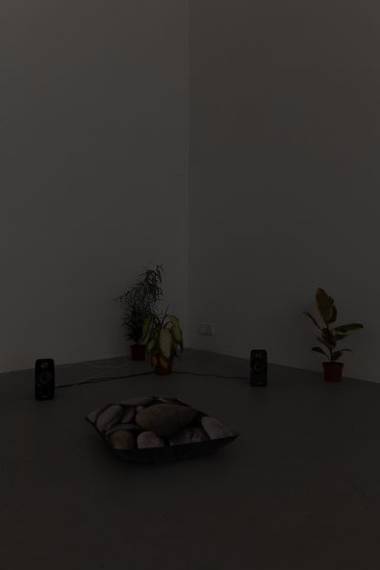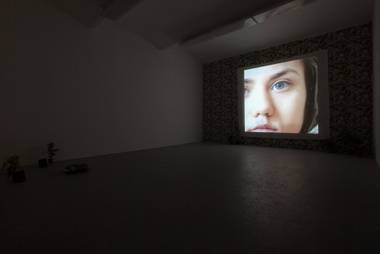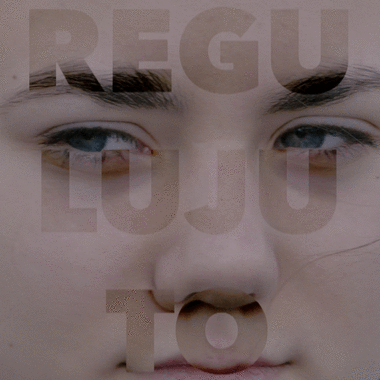Marie Lukáčová: Gizd and Zgarb
31. 5. – 18. 6. 2017
opening: 30. 5. 2017 from 6pm
curated by: Gabriela Kotiková
The body as an apparatus
„As a body—and this is the only important thing about being a subject-body, a techno-living system—I’m the platform that makes possible the materialization of political imagination.“
Paul B. Preciado
According to Giorgio Agamben, the social and political reality not only of late-capitalism can be seen as an endless struggle between the bodies and apparatuses [1]. In this agonizing struggle subjects rise as a resultant of these opposing forces. These fragile and never complete entities strive for historical (re)production through their bodies, and through the surrounding apparatuses that capture, direct, discipline or even fully control their bodies. To rule the bodies and to rule the environment of institutional, technological, economic, energetic and mental apparatuses therefore means to rule oneself.
However, the distribution of power over bodies and apparatuses is not only unapparent, but even completely obscured in the present situation. We relate to our own bodies through non-transparent infrastructures that operate according to the logic of abstract fluxes of capital, and bear the burden of dense sediment of stereotypes of the yesterday that the capital leaves circulating in the capillaries of our societies comfortably. Moreover, the patriarchal, sexist and chauvinist cultural narratives survive as one of the cornerstones of the socioeconomic hierarchy of late bio-capitalism.
Why bio-capitalism? Agamben, together with other thinkers, assumes that the central gesture of each sovereign is to define what does the life mean, as a life worthy of a member of a specific community to which he or she belongs (Greek bios), as opposed to a bare life as a plain survival of an animal (Greek zoē). In the end it is about covering the entire space-time profile of an individual life with an apron whose curves direct the movement of an individual over this area and determine how to properly eat, how to love properly, which relations to establish, how to express, how to dress, which manners are appropriate to a given identity, what taste to develop and so on.
To understand this ideological formation, an iron cage we are imprisoned in, as a massive establishment of life becomes more natural, as we recognize how this whole structure is fundamentally based on rich reproductive networks of non-capitalist nature. Human sociality, collective and individual passions, ecosystem processes, sexuality, care for others, entertainment and relaxation, all of this makes up a tremendous assemblage that supports the entire structure of economic production. This assemblage is co-opted, appropriated; and demands to break free from this constriction.
And thus we come to the issue of collective emancipation. It has two paths. The first one is the profanation of apparatuses, as Agamben calls it. It is nothing more than making the non-transparent apparatuses transparent, making their internal mechanisms and their interrelationships translucent, and thus breaking the power structures that are realized and consequently petrified by the operation of the apparatuses. It is the act of removing the sacred veil from the secular instruments of power. Then, if nothing is sacred to us anymore, we are also able to finally free our bodies as a place of political intervention of the sovereign subjects that arise from the synthetic activity of human and non-human collectives.
Why should we not perceive the body as another of the potentially infinite series of apparatuses? Yes, it is the primary site for the realization of the subject in a sense, but even this fact is more of a historical circumstance than an eternal truth. Perhaps, as the body is known to be the most intimate of all the apparatuses, we ought to begin with it. The gears of capitalist apparatuses get jammed easily when they come across a collective of bodies that fail to fit its entrails, opposing it with their materiality, their obscene aesthetics, their violent sabotage of the inorganic mechanism that is extracting capital from the veins of the planetary congregation of things, that people incidentally belong in. The fight against objectification does not necessarily have to imply subjectification in the classical sense - it can just as easily mean to traumatically become an active object.
Needless to say, the coordinates of trajectories of this subversive activity are necessarily situated in the space of queer, feminist and post-colonial movements and theories, because they give us the tools for an enlightened inventions of new, post-capitalist bodies and desires. Such bodies might not be human (but non-human and post-human), they might not be singular (but collective and infinite), and they might not be stable (but nomadic and fluid). If the body is a medium of political imagination, to ignite imagination means not only to destroy the walls that surround the body, but, above all, to survive the individual transgression of one's own corporeality.
Lukáš Likavčan
[1] The English term apparatus is used as a translation of Foucault‘s concept of dispositif. Foucault refers to a network of linguistic and non-linguistic resources that have a strategic power function while drawing on a certain scientific knowledge. Because Agamben is trying to redefine the apparatus as "clear management tools", I try to make the concept of dispositif and the apparatus separate from one another also in Czech language, and therefore I do not adhere to the Czech Foucault custom.
Jeleni Gallery exhibition program is possible through kind support of Ministry of Culture of the Czech Republic, Prague City Council, State Fund of Culture of the Czech Republic, City District Prague 7
Media support: Artycok.tv, ArtMap, jlbjlt.net and UMA: You Make Art

